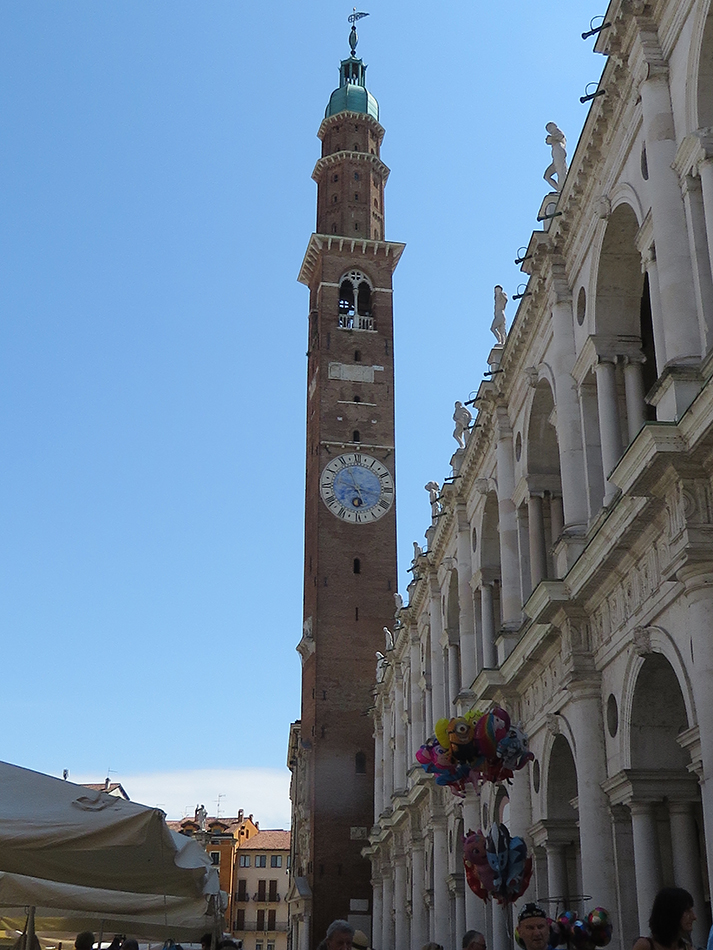
Although time and its measurement is a fundamental component of human life, a special type of clock which takes matters to the next level is the so-called
astronomical clock and whose purpose is not to measure time per se but to convey astronomical information and, in particular, the relative position of the
Sun and Moon as well as the zodiacal constellations and, in some cases, the position of the planets all as a function of time.
The oldest such effort to effectively emulate the overhead celestial sphere (ie a mini-planetarium) is the
Antikythera Mechanism which was discovered in 1901 totally by
accident by sponge divers off the coast of the Greek island of Antikythera. It has been dated to approximately 80 BC and it is believed to be the work of
Poseidonius of Rhodes. The Antikythera Mechanism is currently on display
at the National Archaeological Museum in Athens, Greece.
Note: The city of Vicenza in northern Italy with a population of approximately 110,000 inhabitants is best-known for its stunning
architecture designed by the architect Andrea Palladio during the 16th-century and which includes the Basilica Palladiana (a UNESCO monument). Forming part of
the basilica is the 82-meter tall tower to the north and which boasts the colourful and simplistic astronomical clock seen below. Built in 1174 AD, the tower
would reach its present height following an extension in the fifteenth century.
A cursory look at the clock will immediately reveal that it differs from more orthodox clocks constructed during the Renaissance with the time of day based
on a 12-hr dial using the roman numerals I through XII as opposed to the 24-hr dial (I through XXIV) virtually everywhere else in Italy and throughout Europe.
Hash marks between the hourly intervals, representing mid-hr (ie 30 minutes), are also present on the outermost ring so as to coincide with the bell sounds
made every 30 and 60 minutes. A smaller ring follows with hash marks indicating 15-minute intervals. The central portion of the clock is painted in a cobalt
blue colour, thus representing the night sky, and includes a sphere depicting the Moon and its phases. Finally, the presence of two dials allow for the precise
indication of time with the shorter dial representing the hour of day whereas the longer dial represents minutes within the hour. Following the bombing of the
tower by Allied forces during WWII, the clock mechanism was replaced using a radio-controlled atomic clock interface for ultimate precision.
Note: For a view of the astronomical clock using greater focal length, please click
here and
here.
Note: For additional results involving astronomical clocks from around the world, please click
here.
|
Body: Sun Mass: 332,900 x Earth Mass Eq Diameter: 109.1 x Earth Distance: 149 million km RA / Dec: 23h 41m 41s / +89° 19' 51" Diameter: 32.16' Magnitude: -26.8 |
 |
Date: June 11, 2023 Location: Piazza dei Signori, Vicenza, Italy Equipment: Canon PowerShot SX60 HS @ 3.80 mm / f4.0 Exposure: 1 x 1/1000 sec ISO 400 RAW Image Format 4768x3516 Image Size Continuous Servo Mode Manual Mode Software: Photoshop CS6 Processing: Brightness/Contrast Resampling JPG Compression |